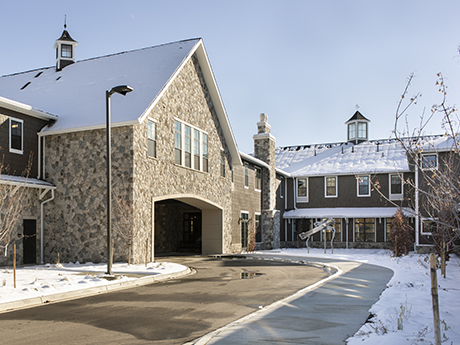By Hayden Spiess
Seniors housing industry players have contended with their fair share of challenges over the past couple of years, along with the commercial real estate sector on the whole. Elevated interest rates have continued to complicate investment activity, and increasing costs have impacted all aspects of the senior living landscape, especially development.
Given the robust demographics driving the industry though, some of these same challenges have helped fuel its recovery. For instance, depressed levels of development activity are driving down vacancy and generating interest in existing senior living properties. Brokers active in the seniors housing subsector have observed a strong revival of transaction volume and are optimistic for the coming years.
Nine of these brokers weighed in and shared their perspective on today’s landscape. Participants included Allison Irwin, vice president, mergers & acquisitions at Evans Senior Investments; Cindy Hazard, president of JCH Senior Housing Investment Brokerage; Dave Fasano, managing director at Berkadia Seniors Housing & Healthcare; Josh Jandris, vice chair and co-head, national seniors housing capital markets at Cushman & Wakefield; Jay Jordan, co-founder of Continuum Advisors; Rob Reis, senior managing director of investments and director of senior housing at Marcus & Millichap; Ryan Saul, senior managing director of SLIB; Steve Thomes, executive managing director of Blueprint; and John Sweeny, co-head of national senior housing at CBRE.
What has transaction volume looked like over the past 12 months? How does it compare to the year prior? Do you expect deal volume for the entirety of 2025 to meet, exceed, or fall short of the previous year?
Irwin: Over the past 12 months, transaction volume in seniors housing has rebounded compared with the prior year, with more capital returning to the market and buyer activity steadily increasing. While 2024 saw improvement from the post-COVID slowdown, 2025 has brought even stronger momentum, with more assets trading and investor confidence improving. I expect deal volume for the entirety of 2025 to exceed 2024, driven by rising occupancy, limited new development, and a wave of loan maturities prompting sales. These dynamics are setting the stage for a very active year in investment sales.

Sweeny: Transaction volume for 2025 is increasing. We are seeing very strong interest in seniors housing, given the backdrop of favorable fundamentals. This is evidenced by robust demand (as boomers age and the need for housing, care and services increases) and decades-low supply (as development is not feasible in scale given high replacement costs and capital markets).
Hazzard: JCH Group’s deal volume is increasing. Based on our current pipeline, we expect overall volume in 2025 to be higher than in 2024. There is capital that has been sitting on the sidelines for too long, and investors are under pressure to deploy it before opportunities pass or their funding commitments expire.
Jordan: For us, transaction volume and activity are up year over year.
From a valuation perspective, we have seen significant upward momentum, driven by the combination of improved operations and strong investor demand. We are seeing continued compression in cap rates, especially over the past nine months. Last year saw a particularly high volume of deal flow, and we’re on pace to meet that this year. Of interest is the diversity of the deals and sellers; we are seeing more stabilized and light value-add property acquisitions, as opposed to more turnaround opportunities last year.
Fasano: Seeing increased momentum is how we’d describe the market so far in 2025. Compared with the sluggish start of last year, which saw just over $4 billion in transactions in the first half of 2024, the pace of 2025 has picked up, with nearly $5.8 billion in sales. Historically, activity ramps up in the second half of the year, and our outlook for 2025 is for sales volume to surpass the $13.4 billion of 2024 and continue to grow through 2026.
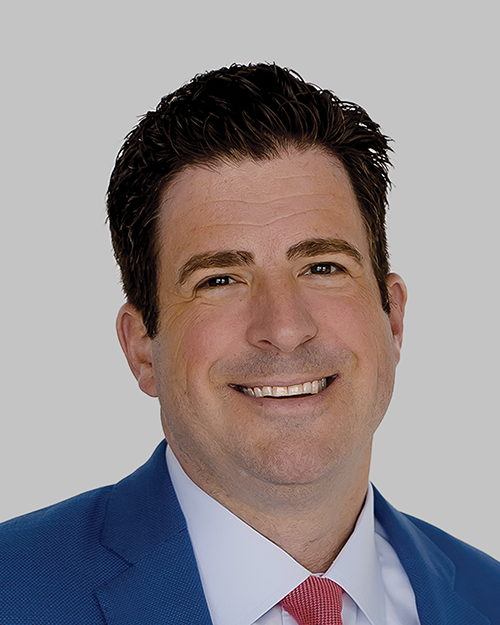
Jandris: Transaction volume was robust heading into Q2, but Q3 has been a little slower. The universe of sellers remains stratified, and there is still a pretty significant price-per-unit sensitivity, even when deals offer buyers strong or above-market cap rates.
Reis: Transaction volume over the trailing twelve months has been consistent, strong and steadily increasing. Our 2025 volume of proposals, listings and closings will exceed that of 2024 in number of transactions as well as total transaction volume in dollars.
Saul: Transaction volume over the past 12 months has definitely increased. Based on the number of deals currently under contract and those on the market, we anticipate 2025 will exceed the transaction volume of 2024.
Thomes: We continue to see, in general terms, a tremendous amount of merger and acquisition activity in all segments of the seniors housing and care market. Over the past 12 months through July 31, 2025, Blueprint closed 154 transactions. we’re busier today than we were one year ago at this time, and we see our transaction velocity continuing to increase over the next 12 months.
What has been the most compelling story or biggest surprise within the realm of investment sales over the past year?
Irwin: One of the biggest surprises has been how quickly the senior living market has turned. For the first time in a while, occupancy is outpacing other major real estate sectors. Coupled with limited new supply and more capital looking for placement, this shift in fundamentals has brought buyers back to the table. It marks a clear turning point after years of uncertainty.
Fasano: The two standout stories have been the dramatic compression in cap rates and surging appetite for large portfolio deals. The market average cap rate has dipped to 7 percent, down from 7.6 percent last year, with premium, best-in-class communities trading well below a 7 percent cap rate. Portfolio sales volume has skyrocketed — up 200 percent year over year — as REITs and private equity have ramped up bidding, particularly for high-margin, full- acuity communities in major markets. We’re seeing aggressive competition driving pricing to new heights based both in terms of cap rates and price per units.
Hazzard: The resilience of the market has been the biggest surprise. Despite ongoing challenges such as staffing costs, inflation and high interest rates, we continue to see buyers actively seeking opportunities. The appetite for acquisitions remains strong, particularly from groups with long-term strategies.
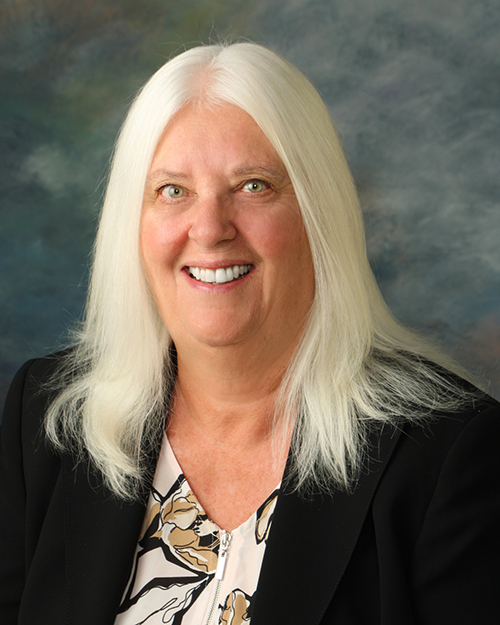
Thomes: While perhaps not a surprise, one of the most compelling shifts has been just how active the investment sales market has become after years in survival mode. Each quarter seems to surpass the last in terms of momentum, particularly in the number of smaller transactions and core-plus deals, which are trading at levels that few anticipated this soon after the pandemic. The return of REITs and a noticeable uptick in private equity fundraising has reinforced the sense that capital is once again flowing into the space with conviction. It is both refreshing and exciting.
Jordan: There has been a strong shift in equity capital coming into the space, both in terms of existing investors deploying more and increasing exposure and new capital entering the space and pairing with seasoned industry veterans. The increased demand is further evidenced by the record number of prospective buyers executing non-disclosure agreements (NDAs) to review deals we are marketing.
Sweeny: The emergence of investor interest in the sector has created competitive bidding processes resulting in narrower bid-ask spreads.
Saul: We’ve seen the availability of debt and equity increase. That liquidity is being met with both turnaround opportunity and performing assets on the market.
What factors have had the greatest impact on the acquisitions market over the past year?
Saul: Increased occupancy and better financial performance are having a positive impact on the acquisition market. We’ve also seen more lenders and REITs providing liquidity in the market.
Irwin: Occupancy gains and improved access to debt have been the primary force behind the recent uptick in acquisitions. With communities filling up faster than expected and new supply constrained by high construction costs and asset conversions, investors finally see the fundamentals lining up. Capital is ready to be deployed, and more deals are closing as financing becomes more accessible.
Hazzard: High interest rates remain the largest factor. Lenders are stricter on debt-coverage requirements, which puts pressure on net operating income (NOI). Sellers with strong, consistent operations are in the best position to attract buyers and secure financing. Additionally, the persistent bid-ask spread — wherein sellers’ price expectations and buyers’ offers don’t align — continues to slow deal progress.
Thomes: A blend of improved performance, interest rate stability and acquirers’ access to capital have had the biggest impact.
Fasano: The increase in NOI, lack of new supply and the stabilization of interest rates. Labor stabilization and rental rate growth have allowed communities to shed costly contract staffing and strengthen financial performance. With operators confidently pushing rental rates up as high as 6.5 to 8.5 percent or greater annually, Class-A assets have become more attractive than ever.
Jandris: Sellers have remained selective, despite a backlog of deals needing to trade. Again, NDA traffic has increased considerably, but I think many groups are reluctant to get too aggressive. The household names remain the most active in the market and it is great to see them putting their best foot forward and stretching to make deals work that fit into their acquisition strategies.
Sweeny: A sustained recovery in occupancy, accelerating demand, historically low supply growth and the ability to achieve positive leverage relative to other real estate asset classes have had the biggest impact.
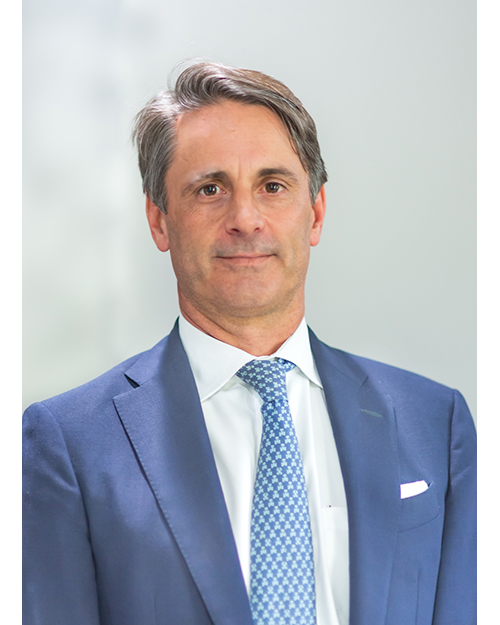
Reis: The first is fundamentals. We see consistently strong year-over-year operational performance in the pricing analyses we’re completing weekly for our clients. Occupancy and top-line revenue have been climbing upward for the past several years; we are now seeing NOI margins ratchet back to pre-COVID levels. The second factor is one that was supposed to have been banished post-election: Uncertainty. It’s been dialed up to 11.
Have you observed any trends with regard to the types of entities buying and selling right now? Which group (e.g., REITs, institutional investors, private equity, high-net-worth individuals) is the most active in buying currently? Which group is selling the most?
Jordan: The REITs have been particularly active on the acquisition front, and we’re also seeing a lot of private equity return. The REITs have enjoyed a relatively low cost of debt capital compared with much of the private equity, but we’re seeing that gap narrow and private equity become more aggressive in its growth objectives.

Hazzard: The most active buyers are regional owner-operators and private equity groups focused on expansion. On the selling side, we’re seeing many smaller owner-operators deciding to retire, as well as groups facing maturing loan debt that cannot refinance under current terms.
Irwin: Private groups have really been the most active on both sides of the table. Most of the buyers we’re seeing are private equity, regional operators or high-net-worth individuals going after value-add or off-market deals. On the sell side, it’s a lot of private owners looking to exit certain markets or clean up their portfolios. Institutional groups and REITs are still out there buying, mostly stabilized stuff, but they’re being more selective and not selling nearly as much as the private groups.
Sweeny: REITs especially have been much more active than in years past. Welltower, for example, has an attractive cost of capital, and as such has closed more than $9 billion of acquisitions year to date. Additionally, several new core/core-plus vehicles have been raised on the private equity side, providing more liquidity for owner and seller monetization
Saul: The high cost of construction is bringing more acquisition opportunities to those looking to grow their portfolios. Buyers can often acquire communities for a fraction of what it would cost to build new.
Thomes: As far as most active sellers, we’re experiencing a bit of a mixed bag with no single group materially exceeding another in liquidating investments. Generally speaking, we’re emerging from a ‘need-to-sell’ period into one where investors are exiting because they can see accretion in today’s market pricing.
Fasano: The REITs have continued to lead in buying activity this year, accounting for 43 percent of all domestic investment sales so far. Private equity is also highly active, representing about 65 percent of our transactions at Berkadia and half of our buyer pool. On the sell side, private equity groups have made up roughly 75 percent of total sales.
Jandris: Developers have been good sellers, especially those with good assets that exhibit strong preleasing and on-time or better-than-on-time stabilization. We have encountered fewer transactions that were bank- or lender-directed sales. The most active buyers are still the REITs. Private equity funds and family offices are definitely looking, but it is hard to make sense of a number of deals on the market, where financing is necessary.

Reis: The REITs are clearly controlling the conversation with Class-A transactions. That’s not the space we play in; we deliver value to mom-and-pop investors who are exiting the business. Buyers for these sorts of buildings are typically local or regional investors who are in the growth phase of their investment lifecycle.
Broadly speaking, would you say it’s a buyer’s or a seller’s market?
Irwin: Right now, I’d say it’s a buyer’s market. There are some great opportunities out there for groups that are ready to deploy capital. With limited new supply, strong occupancy growth and financing starting to loosen up, the fundamentals are finally lining up. We’re also seeing more sellers, especially smaller operators, willing to transact which is giving buyers a bit more leverage.
Hazzard: It’s still a buyer’s market. Lenders are cautious, and that’s limiting the number of qualified buyers, which puts pressure on sellers. Well-capitalized groups that can move quickly have the upper hand right now. That said, if a facility is clean, stabilized, and performing, sellers can still get strong pricing — but those deals are the exception, not the rule.
Jordan: We are in a transitional market where we are shifting from what has been a buyer’s market over the past couple of years, now trending toward a seller’s market.
Sweeny: Generally speaking, we believe it’s more of a buyer’s market at the moment given where we are in the economic, real estate and fundamental cycle for seniors housing. However, the dislocation in pricing has largely subsided, resulting in a healthy market that provides ample liquidity for sellers who have been forced to hold over the past several years.
Reis: We’re at a ‘Goldilocks’ moment. If you have a performing property, there will be several buyers who are ready and willing to do a deal. Our experience is that the buyers who are showing up are focused and prepared to win, not just looking for bargains.
Fasano: It’s become a much more balanced market compared to the past 18 months. The wide bid-ask gap we experienced in late 2023 and early 2024, which favored buyers, has narrowed as competition heats up. We’re now seeing final bids jump by 10 percent or more, signaling renewed momentum for sellers and healthy competition among buyers.
Thomes: I am going to unabashedly answer this from the perspective of a broker. It is an excellent time to be both a buyer and a seller. Sellers can expect a great deal of interest in their offerings (assuming pricing is responsibly aggressive) and buyers can expect plenty of opportunity and increased access to capital.
Saul: I believe transaction volume is so high in part because we are in a balanced market. In some instances, it would be considered a buyer’s market. There are strategic acquisition opportunities in certain markets where they don’t have much competition among bidders. In other instances, it would be a seller’s market, with well-capitalized buyers and multiple bidders competing for acquisitions.
As far as investment sales activity is concerned, what are the biggest headwinds at play right now?
Reis: Economic, social and geopolitical uncertainty at home and abroad.
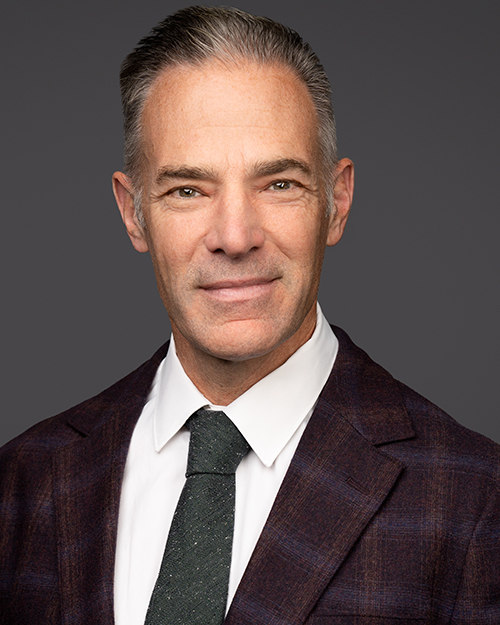
Saul: Liquidity and cost of capital would be the biggest headwinds right now. If REITs or lenders pull back on their funding capabilities, that would cause a slowdown in acquisition volume with less buying power for buyers.
Hazzard: Rising operating expenses, staffing shortages and regulatory pressures are the most significant headwinds. These challenges directly impact NOI, influencing pricing and underwriting. While interest rates remain a factor, they are no longer the primary concern. The biggest hurdle continues to be bridging the bid-ask gap, as sellers hold to past valuations while buyers underwrite conservatively based on current performance and future risk.
Sweeny: Timing. The macro climate has been volatile, which has resulted in deliberation on timing. Given the muted investment sales volume since COVID and interest rate increases, we anticipate this will pick up considerably over the next couple years.
Irwin: Staffing remains one of the biggest headwinds in the market. It is not just a short-term challenge, as operators are navigating a long-term shift in labor dynamics that directly impacts how buyers underwrite deals. If a building is struggling with staffing, it is hard for buyers to get comfortable with the numbers. Another major hurdle is outdated product. Smaller unit sizes, dated studios and a traditional approach to the move-in process do not align with today’s consumer expectations. The newer generation of decision makers is much more involved, which has shifted demand toward more modern, thoughtfully designed communities.
Thomes: Debt capital. While lenders are thawing and underwriting criteria is returning to metrics we saw prior to COVID, we’re still witnessing a fair amount of caution from traditional debt providers.
Jordan: While nationwide trends across seniors housing have been very strong, there are still markets that have been slower to recover, primarily due to oversupply. Certain markets still face occupancy and rate headwinds that will likely persist until demand catches up with supply. In the capital markets, it is still a challenge to obtain financing for turnaround opportunities where immediate debt-service coverage is not there, in-place operating losses persist or there are heavy capital reinvestment needs. These present great opportunities for many but have been a challenge in terms of financing.
Fasano: Elevated and uncertain debt costs remain but are subsiding. Increased competition from banks and agencies is driving activity, and while most investors are adjusting to current interest rates, the market would welcome a further drop of 50 to 75 basis points. The underlying story is that there’s healthy appetite, and capital costs continue to influence deal flow. Overall, the seniors housing industry is one of the most dynamic and sought-after real estate silos in commercial real estate
Are there any geographical markets or seniors housing subsectors seeing notably greater activity at the moment?
Irwin: We’re seeing the most activity in the Southeast and Texas, with Florida and Virginia leading the way. There’s steady deal flow in the Midwest, especially in Ohio, and growing interest in the Pacific Northwest. States like Ohio, Indiana, Illinois and Oregon are drawing attention as their strong Medicaid Waiver programs make seniors housing more affordable and expand access for residents.
Hazzard: We’re seeing more activity in secondary and tertiary markets where pricing is more competitive, and opportunities still exist for stabilized and value-add acquisitions.
Jordan: Investor appetite for newer vintage assets with scale has been particularly strong.
Fasano: At the moment, it appears that communities that are of new vintage, full acuity, stable operations and limited competition are in high demand, regardless of geographic region. With that said, there is a lot of activity in the top 30 MSAs, where properties featuring high NOI (35 percent or greater) and strong occupancy are commanding well over $400,000 per unit. Interestingly, select secondary markets have also seen standout sales when properties meet these criteria.
Jandris: The most activity and the strongest pricing we have seen is for assets that have been built within the past five years that are well located, performing and represent a discount relative to replacement cost.
Sweeny: Primary and secondary markets with favorable senior population growth and wealth characteristics are seeing the most interest at the moment.

Saul: Those states that offer an attractive Medicaid waiver or affordable reimbursement program are seeing significant activity at the moment. Buyers are looking to balance their portfolios with both private pay and alternative affordable options for residents.
What types of seniors housing communities (e.g., independent living, assisted living, memory care) are most attractive to buyers right now?
Irwin: Most of the groups I talk to are looking for communities that have a full continuum: independent living, assisted living and memory care (IL/AL/MC) all in one place. There’s a strong interest in properties that can support residents as their needs change, especially since operators are trying to run more efficiently and keep residents longer. Buyers see those setups as more strategically positioned to support long-term operational stability and resident retention.
Sweeny: Active adult and full-continuum assets are the most in-demand communities currently.
Jordan: Those assets that offer a balanced continuum of care (IL/AL/MC) and have sufficient scale to maintain operational efficiency.
Fasano: Full-acuity communities are the top choice for buyers right now. While assisted living makes up a significant portion of investment sales, it’s the properties with comprehensive care serving a range of needs that are fueling market momentum.
Reis: Seniors housing communities that combine each of the elements (IL, AL, MC) are the best performers and garner the most interest among investors. The reasons are clear. Residents are arriving older with greater care requirements and generally staying for shorter periods of time. Operators realize that they need to “cast a wide net” to provide value to residents and their families.
Saul: Assisted living communities with memory care are leading the way in transaction volume. They offer healthy margin and investment return. Because AL and MC are need-based, that is where we’ve seen the greatest occupancy gains across the care spectrum.
Thomes: There is truly an opportunity for everyone in today’s active market. We’re seeing the core and core-plus buyers seeking well-located communities with the full continuum of care. More regional players remain interested in AL/MC acquisition opportunities. By and large, we’re seeing groups open to everything then narrowing their focus as they learn more about the offering’s pros and cons.

Jandris: IL/AL/MC recent vintage properties.
How appealing do you think seniors housing properties are to investors right now relative to other real estate classes?
Irwin: Right now, I think seniors housing looks a lot more attractive to investors than it did even a couple years ago. Occupancy is climbing, new supply has slowed, and financing is starting to loosen up. Compared with sectors like office or even retail, seniors housing feels more stable and better positioned for long-term growth, especially with the demographic tailwinds finally kicking in as baby boomers age into care.
Hazzard: Seniors housing continues to be highly appealing because it is a need-driven asset class. The baby boomer generation is coming of age, and demand will only increase in the coming years. For investors with a long-term horizon, this sector offers strong fundamentals compared with many other real estate classes.
Jordan: It is a great time to be investing in seniors housing relative to other asset classes. It’s an asset class that has tailwinds that will continue well into the future with occupancy continuing to trend upward, top-line rate growth at historic highs, inflationary expense pressure dissipating and a dearth of new development relative to historic norms.
Jandris: The demographics are 100 percent in our favor. That coupled with little to no new construction and demand being at a generational high has made seniors housing a great asset class for groups looking for long term stability and excellent returns because of the lack of supply.
Fasano: We believe seniors housing is one of the most compelling asset classes today. Unlike other assets, which still face post-pandemic hurdles, seniors housing has proven resilient, even recession resistant. Today’s incoming residents are wealthier than ever — the average 75-and-older household has a net worth over $1 million, supporting strong rent growth. Plus, with a limited supply pipeline and booming demand, this sector stands out as a true long-term performer.
Sweeny: Seniors housing is a top investment theme in real estate today, driven by strong fundamentals and low supply. We are working with several investors new to the space. Further, the addition of seniors housing to the NCREIF Index and bullish research reports from both Green Street and NIC have been helpful to substantiate the investment thesis.
Reis: The value proposition for seniors housing is as strong as ever — if you are already in the business and know what you’re doing. Investment success is driven by operations and requires specific expertise.
Saul: Seniors housing is extremely attractive to investors right now. The demographic boom with an aging population is here. There will be a shortage of communities to meet the demand of the aging population. Capitalization rates are attractive, and returns remain high compared with other real estate classes.
Thomes: That’s tough to answer. It is definitely a matter of preference and where investors fall on the risk-return spectrum.
This article originally appeared in the August-September 2025 issue of Seniors Housing Business magazine.


